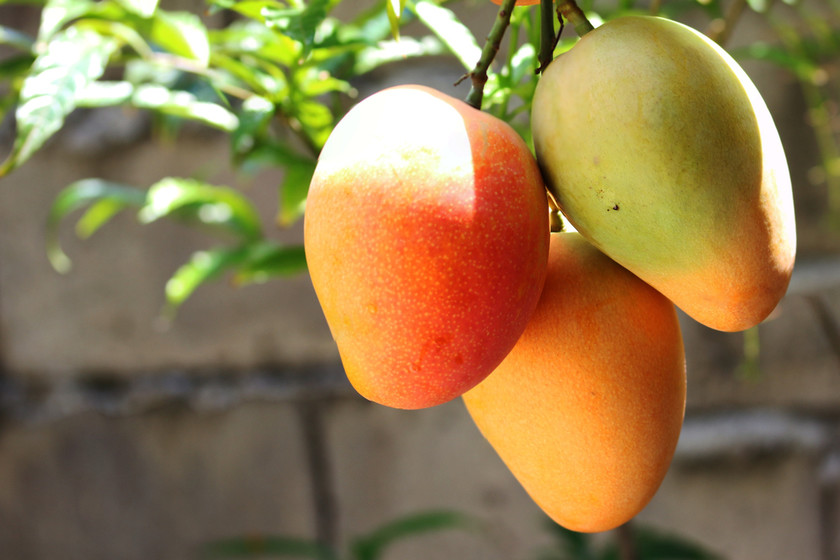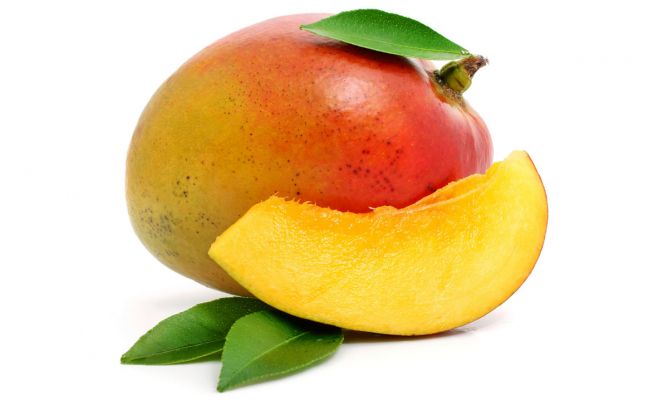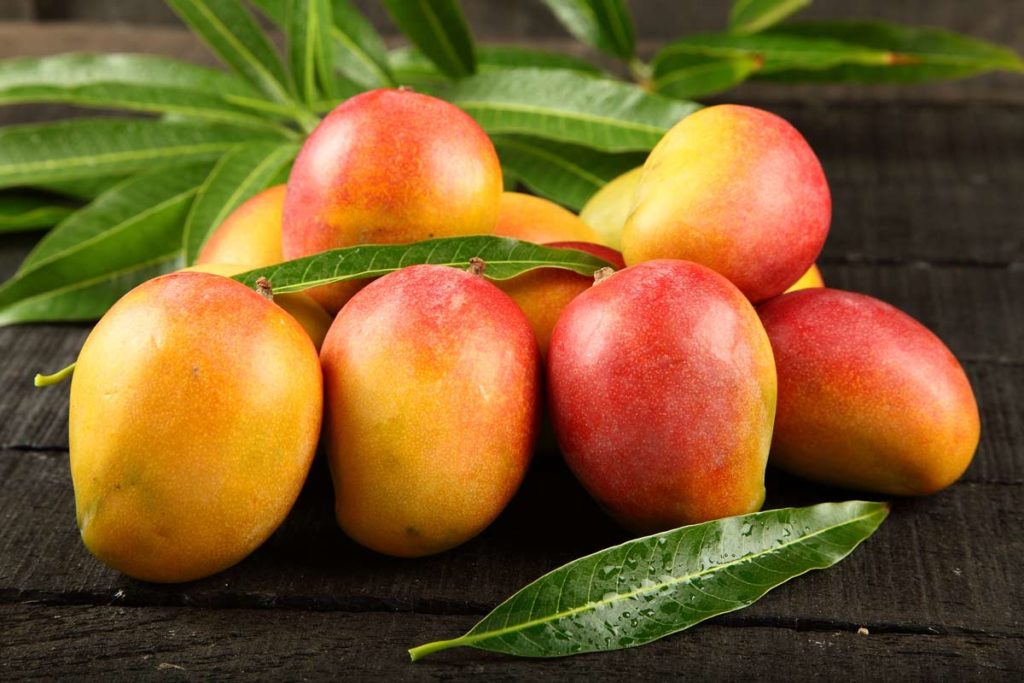
Greetings to all the readers of this community. I want once again to thank everyone for their votes and comments. We are in a time where we all have to adapt to advances but also to changes in order to improve our quality of life.
In Venezuela the mango is a fruit well known by all. It is a fruit that has two phases of flavor in its growth process, it has a somewhat roasted flavor and when ripe it is somewhat sweet.

Here is an investigation:
The mango is a tropical fruit of Asian origin, with an exquisite flavor, which has excellent nutritional qualities and is suitable for all ages. Its cultivation is widespread in tropical and subtropical climate zones around the world.
A daily piece of this tropical fruit covers the vitamin C needs of an adult.
Mangoes are the fruit of a tree, also called mango (Mangifera indica) that can reach twenty meters in height, although it is usually half as tall. This tree belongs to the Anacardiaceae family, to which the cashew or pistachio tree also belong.
The mango is a fruit of Asian origin. Specifically, it is believed to originate from a geographical area between northwestern India and northern Burma (formerly Burma). Possibly it also comes from Sri Lanka (former Ceylon), where it is still possible to see some wild varieties. The first texts where the existence of this tree and its fruit are mentioned are written in Sanskrit and narrate that about 6,000 years ago it was already known by the Hindus. The mango was, and is currently, a highly valued tree in Hindu culture.
The Portuguese first brought the mango to the south of the African continent and later, around the 16th century, to the coasts of Brazil and, from there, to the Island of Barbados. At the same time, the Spanish introduced its cultivation in the tropical Spanish colonies of the American continent. During the following centuries, mango cultivation would reach Central America and the United States, while it became increasingly known in Europe, although its consumption among Europeans has been gradually implanted and is not yet consolidated in all countries.
mango cultivation
Mango cultivation is typical of tropical and subtropical climate zones, mainly due to its susceptibility to cold. The ideal temperature for its optimal development ranges between 20 and 26ºC of average annual temperature. Mango cultivation requires a climate in which the rainy season alternates with the dry season, which is decisive for its flowering.
By continents, Asia is the main producer of this fruit, with a 77% share.
The American continent is the second, with 13% of the market share. And the African continent represents 9% of global production. Australia, along with the Philippines, is one of the main suppliers to countries in Southeast Asia, such as Japan, Hong Kong and Singapore.
Regarding the European continent, Spain has begun an incipient mango production on the Andalusian coast of Granada and Malaga, and in the Canary Islands, which already reaches 800 hectares destined for mango cultivation and, on a small scale, is already beginning to bear fruit. fruits. The dry subtropical climate, fertile soils, abundant water and adequate temperatures and light, make these areas the ideal place for this unique fruit to grow. In Almuñécar (Granada) there are about 30 varieties of mango that have mainly been imported from Florida.
mango varieties
Mango fruits are oval drupes of variable size, which can weigh up to two kilograms in some cases. The skin that covers it is light green at first and, as it matures, it acquires reddish yellow, red, reddish brown and darker green tones, depending on the variety. Inside the fruit there is a single large, flattened central stone with a woody covering. The pulp, juicy and intense yellow, almost orange, can be soft or firm, with or without strings. It is very attached to the bone and is very sweet and aromatic.
Today, there are more than 2,000 species of mango in the world and there are basically three main types, from which all the others come:
Indian Mango: They are very commercial and widely exported varieties. Its fruits have a very marked resin (turpentine) flavor. They resist humidity very little and offer very bright colors, some having quite red skin. They are sweet with a low acid content.
Philippine and Indochinese Mango: They withstand excess moisture and pests very well. Its fruit is longer, with a yellowish-green skin, less colored than the Indian variety, and its pulp is very sweet, without fiber or resinous flavor.
Mango Florida: It is the most widely spread type of variety in the world. They have excellent characteristics, they are very resistant to pests and transport, but most are sensitive to internal decomposition.
The Haden variety was developed in Florida as a seed plant for the Indian variety Mulgoba, in 1910. Today, the Haden variety is one of the most widely traded internationally. Subsequently, other varieties similar to Haden have been developed, some of them highly commercialized such as: Tommy Atkins, Irwi, Haden Glenn, Zill, Sensation, Torbet, Kensington, Van Dyke and Osteen, among others, and research continues in the development of other future ones.
The handle in the kitchen
The texture and consistency of this fruit, its flavor, and even its color, make the mango one of the most versatile tropical fruits in the kitchen.
Normally, fresh and ripe mango is usually eaten as a dessert, alone or accompanied, in ice creams, fruit salads and natural. The best way to appreciate its organoleptic characteristics is to take it raw or with a few drops of lemon or lime to enhance its flavor.
It is also commonly used as an ingredient in juices, smoothies, cocktails, jams and preserves. In some Latin American countries, the unripe, green mango is cooked and consumed as if it were a vegetable, accompanied by the most diverse foods such as fish, meat, ham... in addition to being used for the preparation of sauces that accompany exquisite dishes of its gastronomy.
In India, mango pulp, once dried and ground, is used as a spice, giving dishes a slightly sour taste. With green mango, sugar and other fruits including raisins, apples, pineapples, nectarines, tangerines, dried fruits such as walnuts, etc..., mixed with other condiments (black pepper, mustard, cinnamon, cloves, garlic, ginger, apple cider vinegar), they make a well-known and appreciated spicy sweet and sour sauce in India, mango chutney, which usually accompanies rice dishes.
Tips for buying and preserving mango
Thanks to imports, today it is possible to find mangoes in the markets throughout the year. However, as it is a delicate fruit that does not withstand transport (especially certain varieties of mango), the best time to consume them in our country is in winter, which is the time when it is possible to taste mangoes produced in our environment. .
The tastiest mangoes are those that have a strong consistency, with a smooth skin, without black spots and give off a pleasant and penetrating smell. Although an external appearance with black spots may be indicative that the mango is overripe, sometimes its pulp may be in perfect condition and have an exquisite flavor. A good aroma is an indisputable sign that it is ripe and if the skin gives way when you press it lightly with your fingers on the part of the stem, it is that it is in optimal condition to be consumed.
Nutritional properties of mango
The mango is a food with an exquisite flavor, easy to consume and, in addition, very healthy: it provides excellent nutritional properties, rich in vitamins, minerals and fiber, it is one of the most suitable fruits for all ages and practically for physiological situations.
The mango provides about 65 kcal/100 grams, which is why it is considered a fruit with a moderate caloric content. These calories come mainly from the carbohydrates it contains, since it practically lacks fat and protein.
mango vitamins
Mango is very rich in vitamins A, C and E, with antioxidant action, capable of neutralizing free radicals responsible for aging and a risk factor for various degenerative and cardiovascular diseases and even some types of cancer. A piece of this fruit of about 200 g covers the daily needs of vitamin C in an adult individual, 30% of vitamin A and 23% of vitamin E.
- Highlights the mango's high content of vitamin A and beta-carotene, which are transformed in the body into vitamin A, as it is needed. Vitamin A is essential for proper vision, helps maintain good skin and mucous membranes, and prevents respiratory infections. The consumption of this fruit can be a very useful nutritional strategy in the prevention of blindness caused by the deficiency of this vitamin in children in developing countries. The body also better assimilates this nutrient thanks to the presence of vitamin E, which protects vitamin A from oxidation in the intestine and in the tissues.
- Mango is an excellent source of vitamin E. A piece of 200 g provides more than 20% of the recommended daily amount for an adult. Its content in this vitamin is surprising as it is a fruit, since the foods richest in vitamin E are usually oils and fats.
- It is also rich in vitamin C. Vitamin C is involved in the formation of red blood cells, collagen, bones and teeth and favors the absorption of iron present in food, while reinforcing the body's defense system against infections and allergies, reduces cholesterol levels and delays the aging process of cells.
- It also presents small amounts of B vitamins, such as thiamin (B1), riboflavin (B2) and pyridoxine (B6), necessary for the proper functioning of the nervous system, the health of the skin and hair, as well as for the amino acid synthesis and fat metabolism, among others. In this way, eating mango helps, in a certain way, to prevent hair loss, relieves or prevents skin problems, muscle weakness and nervous disorders.
- In addition, the mango provides folic acid, a fundamental vitamin in pregnant women as it reduces the risk of congenital malformations.
Minerals present in the mango
Mango is rich in potassium, a mineral necessary to keep the cardiovascular system in shape, since it favors the movements of the heart, while favoring kidney function. Potassium deficiencies are not very common in a normal diet, but they can occur in very specific situations, such as in some antihypertensive treatments where the use of diuretics causes significant losses of this mineral in the urine, or in the case of athletes with high performance sufferers from significant potassium losses through sweat.
Selenium is a mineral with antioxidant capacity present in greater quantities in other foods such as shellfish and organ meats. However, it is also present in tropical fruits, such as mango, in greater proportion compared to its content in other fruits.
Also in the mango we find small amounts of other minerals such as: - Magnesium, important for muscular activity and with a certain laxative effect;
- Iodine, necessary for the proper functioning of the thyroid;
- Calcium to maintain strong bones;
- Zinc, essential for healthy hair, eyesight, as well as for reproductive function;
- Iron, thanks to which the body produces hemoglobin (a molecule responsible for transporting oxygen through the blood) and its absorption is favored by the presence of vitamin C. For this reason, although iron is present in small quantities, it can be interesting to prevent anemia, something relatively common in pregnant women or women of childbearing age.
I leave you the link of the research page: https://www.lechepuleva.es/nutricion-y-bienestar/el-mango

In Venezuela it is very traditional to eat this fruit that is very tasty and that has a variety of shapes and flavors and that has a wide range of dishes to eat.
This time I wanted to leave you this investigation for the day today I was leaving my house and I could see a mango tree and I could see some good size mangoes to eat and I said that I had to show all the readers a fruit that is very tasty and known for the Venezuelan.
Leave your comment and your votes…..
Nice pics! 🥭🥭🥭🥭 These mangos looks pretty tasty! 🤩
🥦 !BBH 🥦
Congratulations @dennys0antunez! You have completed the following achievement on the Hive blockchain and have been rewarded with new badge(s):
Your next target is to reach 70 posts.
You can view your badges on your board and compare yourself to others in the Ranking
If you no longer want to receive notifications, reply to this comment with the word
STOPTo support your work, I also upvoted your post!
Check out the last post from @hivebuzz:
Support the HiveBuzz project. Vote for our proposal!
Because this is such an awesome post, here is a BBH Tip for you. . Keep up the fantastic work
. Keep up the fantastic work